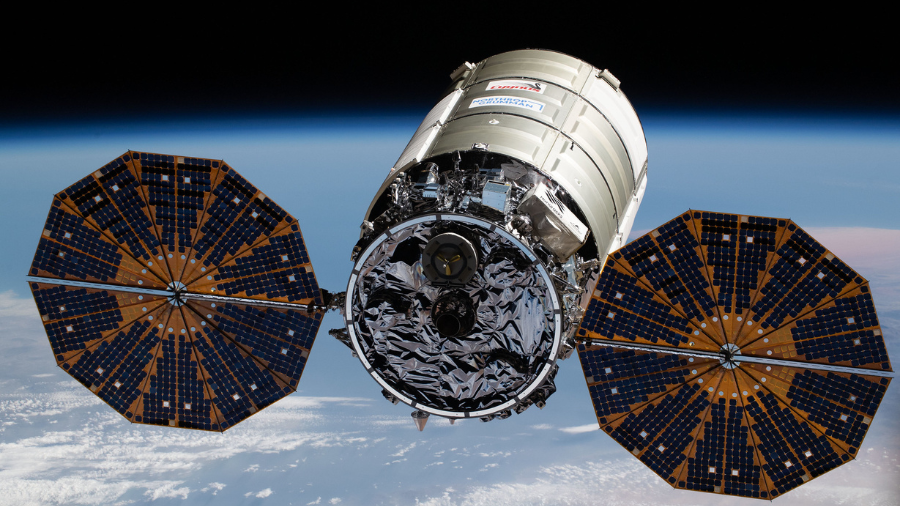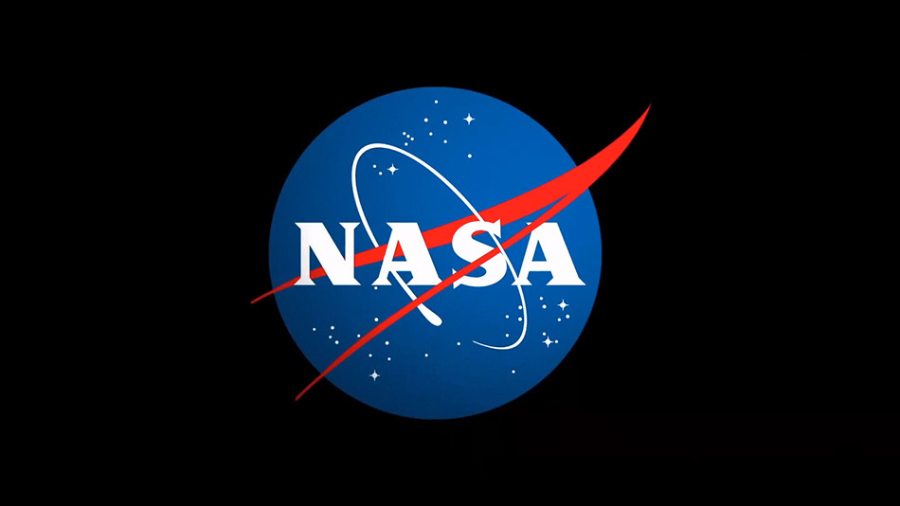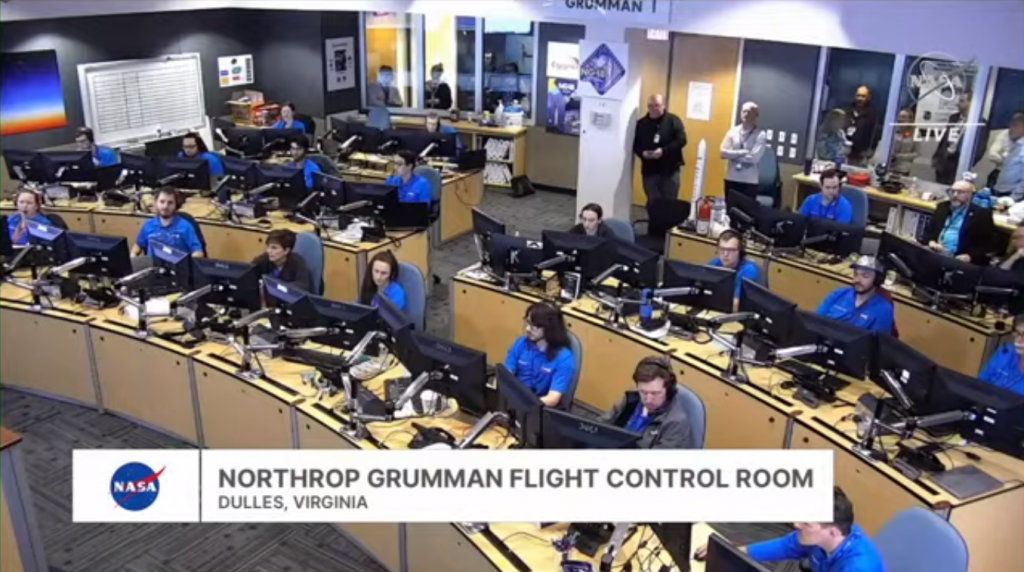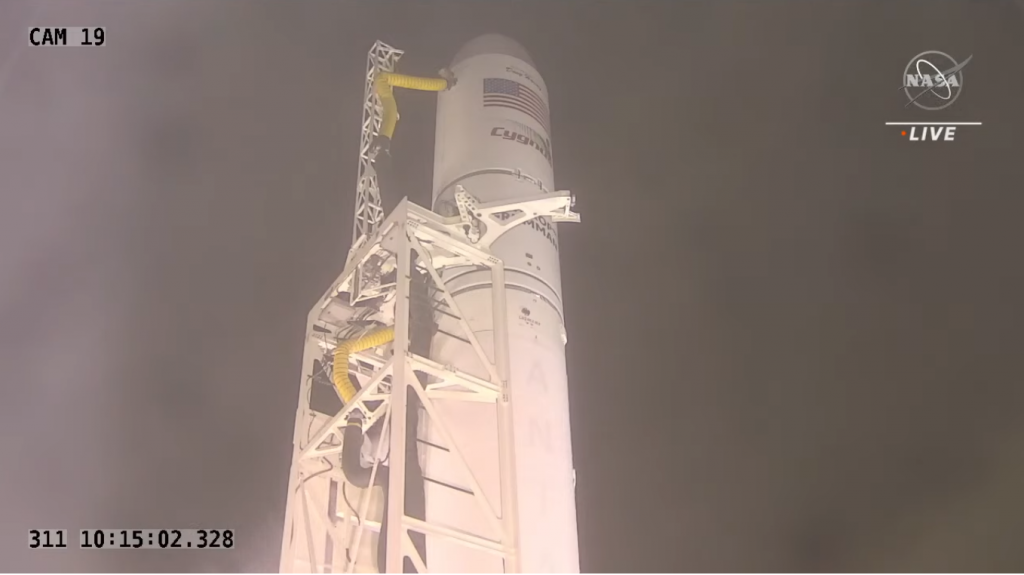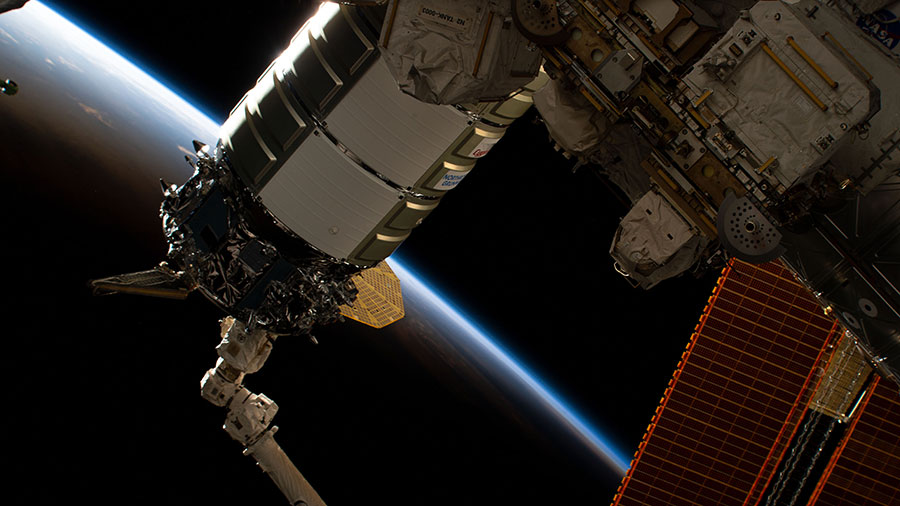
A U.S. cargo craft has been installed on the International Space Station and the Expedition 68 crew members are beginning to unpack several tons of food, fuel, and supplies. Meanwhile, two astronauts and two cosmonauts continue preparing for upcoming spacewalks.
The Cygnus space freighter from Northrop Grumman is open for business after its successful robotic capture and installation to the Unity module’s Earth-facing port on Wednesday morning. NASA Flight Engineers Nicole Mann and Josh Cassada were the first to open Cygnus’ hatch and enter the cargo craft several hours after leak and pressure checks with the vehicle. On Thursday, the duo retrieved science freezers containing research samples from inside Cygnus and installed them on EXPRESS racks inside the space station.
Flight Engineers Frank Rubio of NASA and Koichi Wakata of the Japan Aerospace Exploration Agency (JAXA) helped offload new cargo from pallets delivered aboard Cygnus throughout the day on Thursday. Both astronauts are also unpacking research samples for stowage on the station in anticipation of new science experiments planned to take place inside the station’s Destiny, Kibo, and Columbus laboratory modules. Cygnus delivered a wide variety of science gear and research samples to explore biology, botany, and physics to improve knowledge and benefit health on and off the Earth.
Cygnus also delivered hardware soon to be installed on the outside of the space station by two spacewalkers. Cassada and Rubio will take the new gear, or power augmentation modification kits, outside in the vacuum of space on Nov. 15 and attach it to the starboard truss segment where half of the station’s main solar arrays are located. The new mod kits work will enable the installation of new rollout solar arrays during a pair of spacewalks planned for Nov. 28 and Dec. 1, augmenting the orbiting lab’s power generation system.
Two cosmonauts are also preparing for another series of spacewalks this year to assemble and install a radiator and airlock on the Nauka multipurpose laboratory module. The cosmonauts from Roscosmos, Commander Sergey Prokopyev and Flight Engineer Dmitri Petelin, checked their Orlan spacesuit life support and communication systems today ahead of the assembly spacewalks planned before the end of the year.
Roscosmos Flight Engineer Anna Kikina spent Thursday inspecting and testing laptop computers, She also downloaded research data from a micrometeoroid study to a science computer then cleaned smoke detectors inside the Poisk module.


